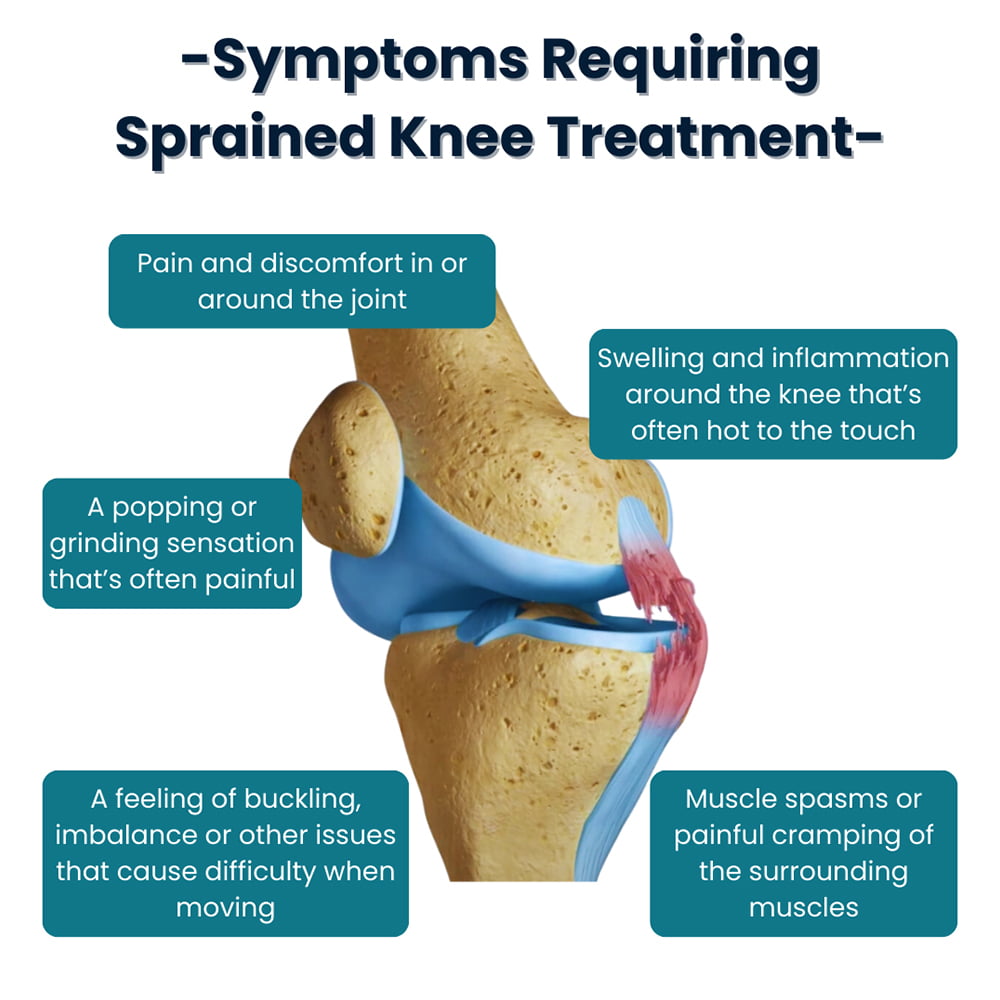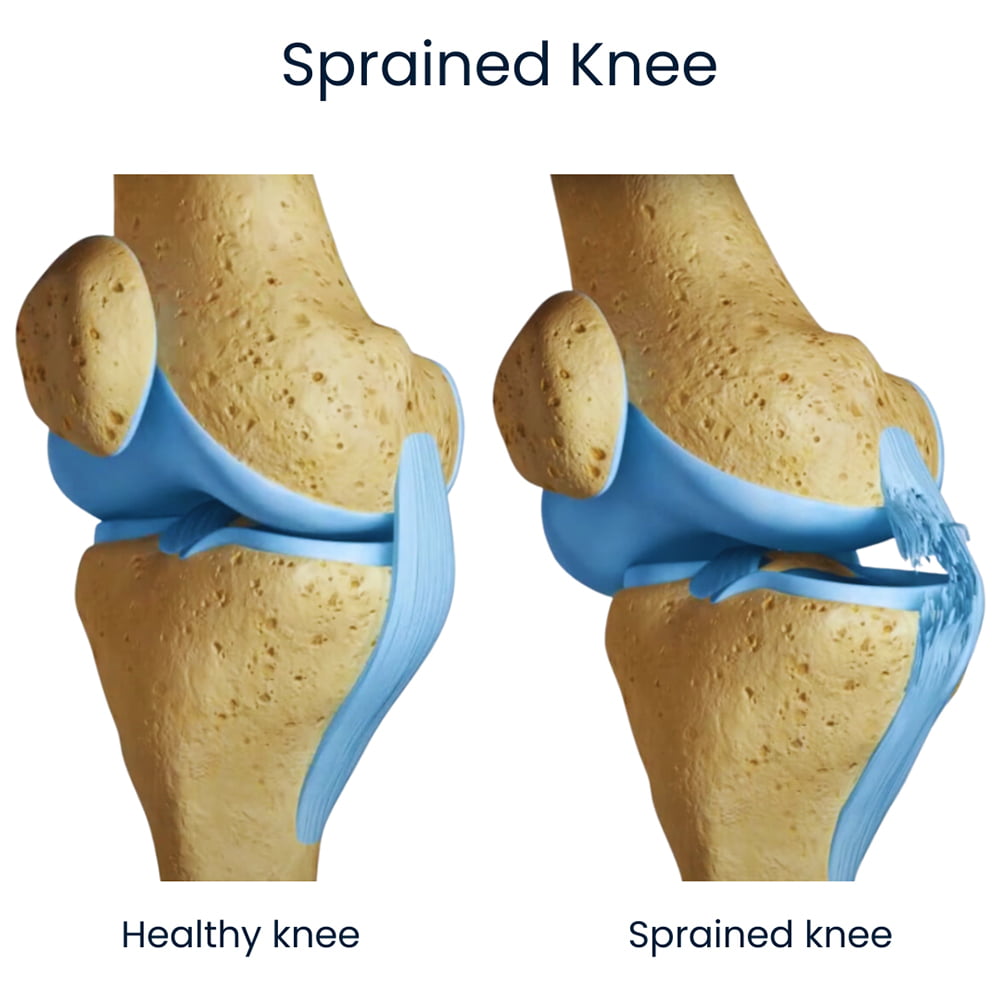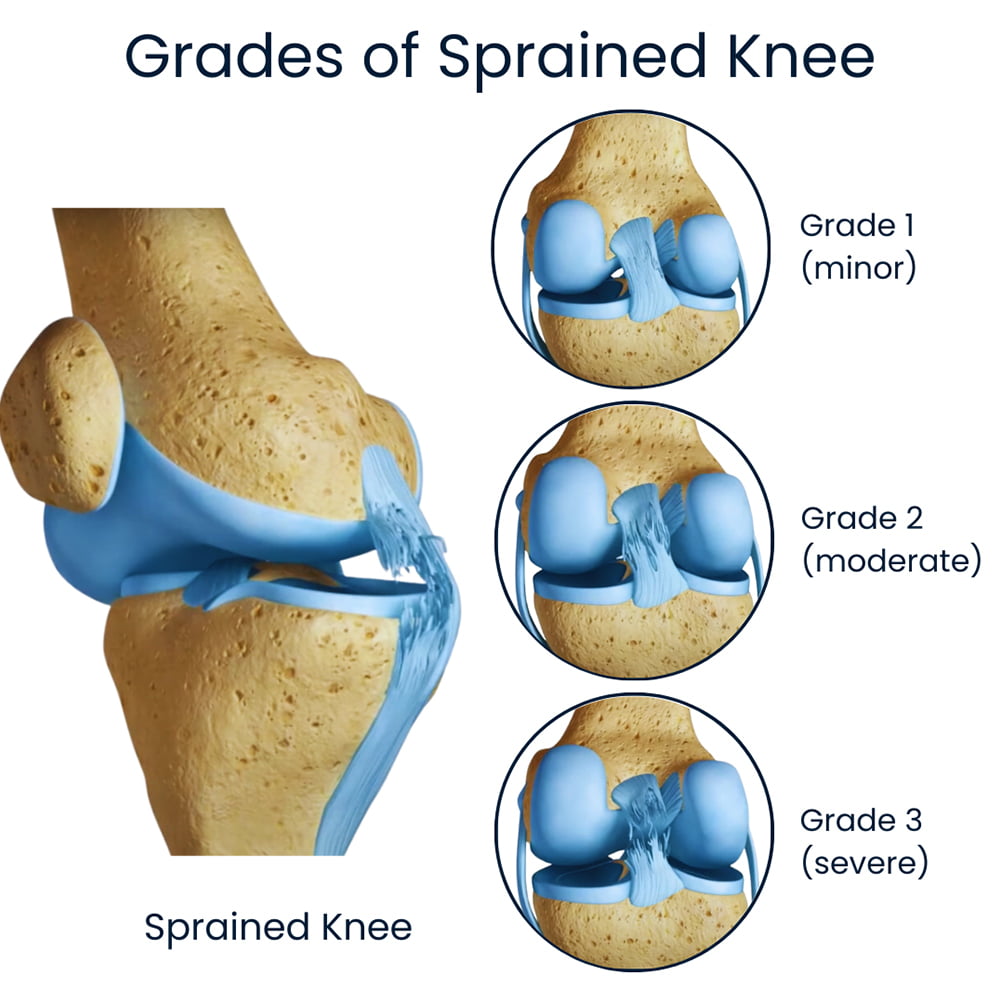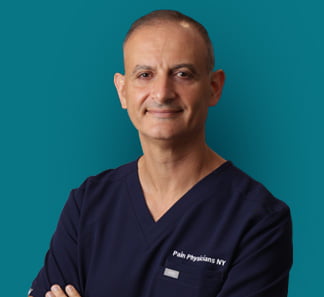A sprained knee is the result of a tear in one of the four major ligaments that surround each knee. These ligaments stabilize and support your every movement. Call on the nationally recognized pain doctors at Pain Management NYC at the first sign of knee pain, as not having it treated can lead to serious consequences. This pain control clinic even offers emergency appointments if you injure your knee playing sports, falling or getting into an accident. Get the help you need when you need it.
There’s a difference between a knee sprain and a strained knee. Sprains involve ligament tears or damage, while strains refer to an injury to a tendon or muscle. Four main ligaments surround your knee, and you rely on them for many of your activities. More often than not, knee pain often indicates a sprained knee. If your knee hurts, contact the best pain doctors in Manhattan at New York center for pain management for a clear diagnosis and appropriate treatment.
While anyone can get a sprain, some individuals have a higher risk. Athletes involved in high impact sports are more likely to sprain a knee, as are those who play sports requiring quick turns with planted feet — such as skiing, football, tennis, basketball and soccer. Runners commonly experience a sprained knee from the hard-pounding impacts of every step. And as you age, you’re more prone to knee sprains as ligaments deteriorate or your balance becomes compromised, leading to falls.
Symptoms Requiring Sprained Knee Treatment
Symptoms of a knee sprain depend on which ligament is affected. Collateral ligaments line your knees on the side. The medial collateral ligament (MCL) works on the inside of your knee, and the lateral collateral ligament (LCL) is situated on the outer side. They work in concert to control the sideways motions of your knees and keep them stable.
Cruciate ligaments, on the other hand, are the ligaments that control the back and forth movement of your knees. The anterior cruciate ligament (ACL) is located in the front and forms an X across your knee, connected to the posterior cruciate ligament (PCL) in back. Common symptoms of most sprained knees include:
- Pain and discomfort in or around the joint
- Swelling and inflammation around the knee that’s often hot to the touch
- Muscle spasms or painful cramping of the surrounding muscles
- A feeling of buckling, imbalance or other issues that cause difficulty when moving
- A popping or grinding sensation that’s often painful
You must receive an accurate diagnosis and targeted treatment because it’s easy to re-injure a weakened joint, which is why your best source of treatment is from the top New York knee pain doctors at Pain Management New York, where they rely on the most advanced diagnostic equipment to provide the most appropriate treatment for a sprained knee.

Risks that Increase Your Potential for a Sprained Knee
 Although anyone can find themselves battling the symptoms of a sprained knee, you may be more susceptible to knee problems, based on your history or lifestyle choices, such as:
Although anyone can find themselves battling the symptoms of a sprained knee, you may be more susceptible to knee problems, based on your history or lifestyle choices, such as:
- Having had a previous sprain, as past injuries weaken tissue, resulting in greater potential for re-injury
- Going straight into strenuous exercise without taking the time to stretch and warm up
- Adding sudden increases in exercise or sporting activities
- Wearing improperly fitting shoes
- Being born with certain bone abnormalities
- Aging that increases your chance of falling
- Carrying extra weight that places undue pressure on the knee ligaments
Diagnosing Knee Sprain

Your injury doctor in New York carefully examines your knee and your gait. Then he discusses your symptoms. Let him know about any grinding or popping noises, especially if they occurred at the time of your injury.
Your doctor may order imaging tests, such as x-rays or MRIs. They provide a better view to the structures of your knee, so your doctor can see where abnormalities lie. Be sure to tell your doctor about any allergies to contrasting dye or any metal you may have in your body before you submit to an MRI.
Sprained Knee Treatment
The reason your pain doctor puts so much into an accurate diagnosis is to be able to find the best treatment for your sprained knee. Depending on what your tests show, your NYC pain management doctor may prescribe:
- Rest and activity modification to allow the tissue time to heal, if you have a minor sprain
- Inactivity and the use of crutches to keep the weight off your knee
- Elevating your knee as much as possible throughout the day
- Over-the-counter or prescribed pain medication to help relieve pain and inflammation
- Ice applied for 20 minutes several times a day to decrease any swelling
- Physical therapy to increase flexibility and strengthen the weakened muscles that support your knees
- A knee injection of corticosteroid medicine to reduce swelling and pain
- Braces and compression bandages to give added support and warmth to the area
Depending on the severity of the tear or sprain, arthroscopic or minimally invasive surgery may be required. This procedure can be accomplished through tiny incisions in your knee. They allow your doctor to assess and repair any damage, such as removing any bone fragments that have been aggravating the sprain.
To get an accurate diagnosis and the care you need to get out of pain, contact Pain Management NYC. You’ll get compassionate care and complete recovery from a sprained knee. You’ll also learn how to avoid future sprains from your doctor’s interventional recommendations.

Boleslav Kosharskyy, MD, is a top-rated, best-in-class interventional pain management doctor. He is board-certified in Anesthesiology, Interventional Pain Medicine, and Palliative Care.
Dr. Kosharskyy is an Associate Professor of Anesthesiology and Rehabilitation Medicine at Albert Einstein Medical College. He’s also the Associate Medical Director of Pain Medicine and Director of Anesthesia for the Joint Replacement Center at Montefiore Medical Center and Albert Einstein Medical College.
He is an active member of the American Society of Anesthesiology (ASA), the American Society of Regional Anesthesia and Pain Medicine (ASRA), and the New York State Society of Anesthesiologists (NYSSA)
